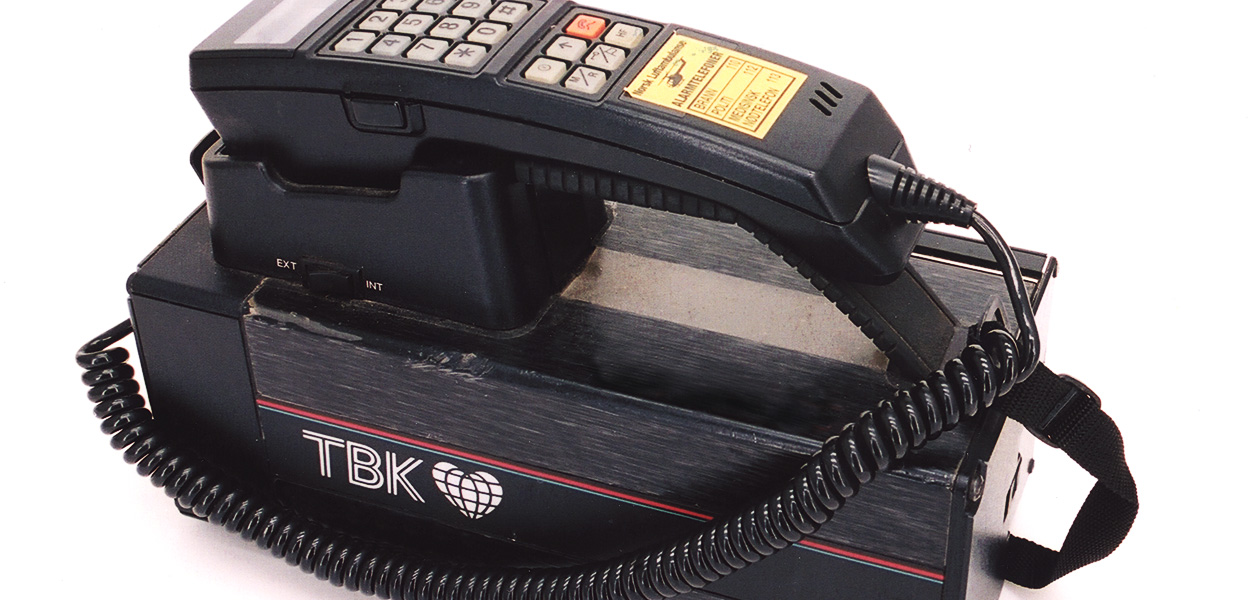The mobile phone

Norway established so-called land-based mobile services from the late 1950s, at the same time as many other countries. Mobile phones were large and heavy, scarcely portable, and most were built into cars. Typical use was in closed networks where the office could communicate with the company’s cars, while the cars could be connected with each other.
In 1966, a research project was established between Telegrafverket (now: Telenor), Norwegian Defence Research Establishment and a private company (Simonsen Radio) and the first so-called ‘radio telephone’ was launched the same year. The main target group for this service was companies with a need for communication between fixed line services and cars, and vice versa. Some private persons acquired such sets, but the prices were very high, more than 30 000 NOK for a set.
In 1969, Telegrafverket changed the name of the service to ‘mobile phone’, and the usage was extended to boats, homes and more as the sets became more portable.
The same year the Nordic telecom companies gathered in northern Norway and decided to establish the Nordic Mobile Technology (NMT) with a goal to develop a common standard for more advanced mobile technology. NMT is now known as the first generation mobile services (1G).
NMT was widely launched from the early 1980s, but the price for the telephone sets was still too high for most private consumers.
Telegrafverket was also a driver in the development of the next mobile generation, GSM (Groupe Spécial Mobile or Global System for Mobile Communication), which was formally standardised in 1989. Norway was one of the first countries to commercially launch GSM in 1993.
At the same time, Televerket decided to extend its operations to other countries. Minor operations started with local partners in northwestern Russia, and in 1994 became a part-owner in the Hungarian operator Pannon (now: Telenor Hungary – wholly owned by Telenor Group).
The exciting mobile journey has brought Telenor to operations in nine markets with nearly 200 million subscribers, almost 30 years later.